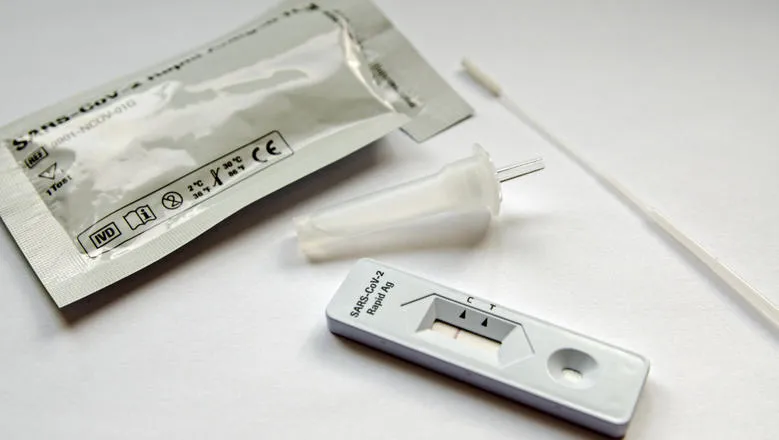16 June 2021
New research finds ways to improve accuracy of Lateral Flow Tests
Research published recently in the journal ACS Materials and Interfaces has provided new understanding of how false-negative results in Lateral Flow Tests occur and provides opportunity for simple improvements to be made.

Lateral Flow Devices were introduced late in 2020 on a global scale to help detect novel coronavirus infection in individuals, with test results produced rapidly in half an hour or less. However, their potential has been somewhat hindered by inadequate sensitivity, with a high number of false-negative results.
Using X-ray fluorescence imaging from Diamond Light Source, researchers from King’s College London set out to identify what could be causing these false-negative results, and what potential modifications could enable increased accuracy.
They identified that the underlying technology of many Lateral Flow Devices is highly accurate and able to theoretically detect trace amounts of the COVID-19 virus, but the limitations fall to the read-out of the device – the technology used to communicate the result of the test.
In the study, they have suggested several potentially simple modifications to the Lateral Flow Devices that could lead to improved performance.
Professor Owen Addison from King’s College London said: “Methods to detect infectious individuals who do not show or are yet to show symptoms remain essential for the management of the current pandemic. Lateral Flow Devices are the simplest and most accessible tests available, and our findings show great scope for improving the deficiencies that these tests have been recently criticized for”.
The collaboration saw researchers from King’s College London, Guy’s and St Thomas’ Hospital Trust work with Diamond Light Source, a national science facility, where they used light in the form of X-rays that can be up to 100 billion times brighter than the sun to image how the virus interacts with the tests. The project was supported by a rapid award of experimental time at the science facility.
More than the Eye Can See: Shedding New Light on SARS-CoV-2 Lateral Flow Device-Based Immunoassays by Koller, Addison et al was published in ACS Materials on May 28, 2021 and can be viewed here:
